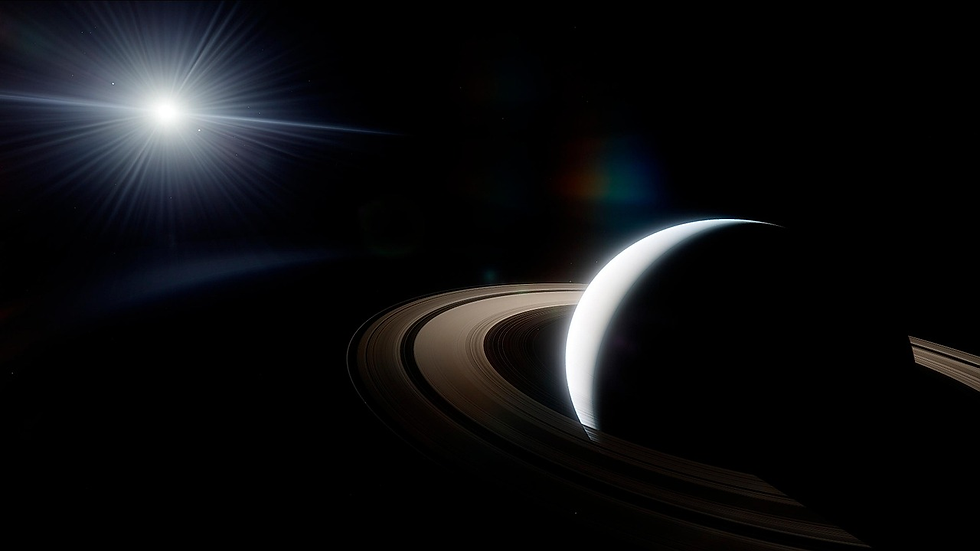Oxford and Southwest Research Institute Scientists Find Enceladus Has Stable Ocean for Life
- MM24 News Desk
- 2 hours ago
- 3 min read

An international team led by Oxford University and Southwest Research Institute researchers has discovered significant heat flow at both poles of Saturn's moon Enceladus, confirming the icy world maintains the long-term thermal stability necessary to support life. The study, published in Science Advances, reveals Enceladus loses approximately 54 gigawatts of heat overall—closely matching predictions of tidal heating and suggesting its global subsurface ocean could remain liquid over geological timescales.
This breakthrough overturns previous assumptions that geological activity and heat loss were confined to the moon's dramatic south polar plumes. Using data from NASA's Cassini spacecraft, the team compared infrared observations of the north pole taken a decade apart, finding the region was about 7 K warmer than models predicted.
"Enceladus is a key target in the search for life outside the Earth, and understanding the long-term availability of its energy is key to determining whether it can support life," said lead author Dr. Georgina Miles of Southwest Research Institute and University of Oxford, reported Science Advances.
The measured heat flow at the north pole—46 ± 4 milliwatts per square meter—may seem modest, but it represents about two-thirds of the heat loss per unit area through Earth's continental crust. When scaled globally, this conductive heat loss totals around 35 gigawatts, roughly equivalent to the power output of 66 million solar panels. Combined with the already-known heat escaping from the active south pole, Enceladus's total heat output reaches 54 gigawatts.
Why does this energy balance matter so much for astrobiology? Enceladus possesses a global, salty subsurface ocean beneath an icy shell, complete with essential chemicals like phosphorus and complex organic compounds. However, for life to potentially emerge and persist, this ocean needs environmental stability over millions of years.
The research demonstrates that the heat Enceladus generates internally through tidal interactions with Saturn—where the planet's gravity stretches and squeezes the moon—is perfectly balanced by what it loses to space.
This equilibrium prevents the ocean from either freezing solid or becoming overly turbulent. "Understanding how much heat Enceladus is losing on a global level is crucial to knowing whether it can support life," said corresponding author Dr. Carly Howett of University of Oxford and Planetary Science Institute. "It is really exciting that this new result supports Enceladus' long-term sustainability, a crucial component for life to develop," according to Science Advances.
The study also provided new insights into the moon's structure, using thermal data to independently estimate ice shell thickness. The analysis suggests the ice is 20 to 23 km deep at the north pole, with a global average of 25 to 28 km—slightly thicker than previous estimates. This information is vital for planning future missions that might use robotic landers or submersibles to directly sample the ocean.
The findings underscore the value of long-duration space missions. "Eking out the subtle surface temperature variations caused by Enceladus' conductive heat flow from its daily and seasonal temperature changes was a challenge, and was only made possible by Cassini's extended missions," noted Dr. Miles.
While the ocean's age remains uncertain, this thermal stability strongly suggests Enceladus has maintained conditions suitable for life long enough for it to potentially emerge, solidifying its status as a prime candidate in our solar system in the search for extraterrestrial biology.



Comments